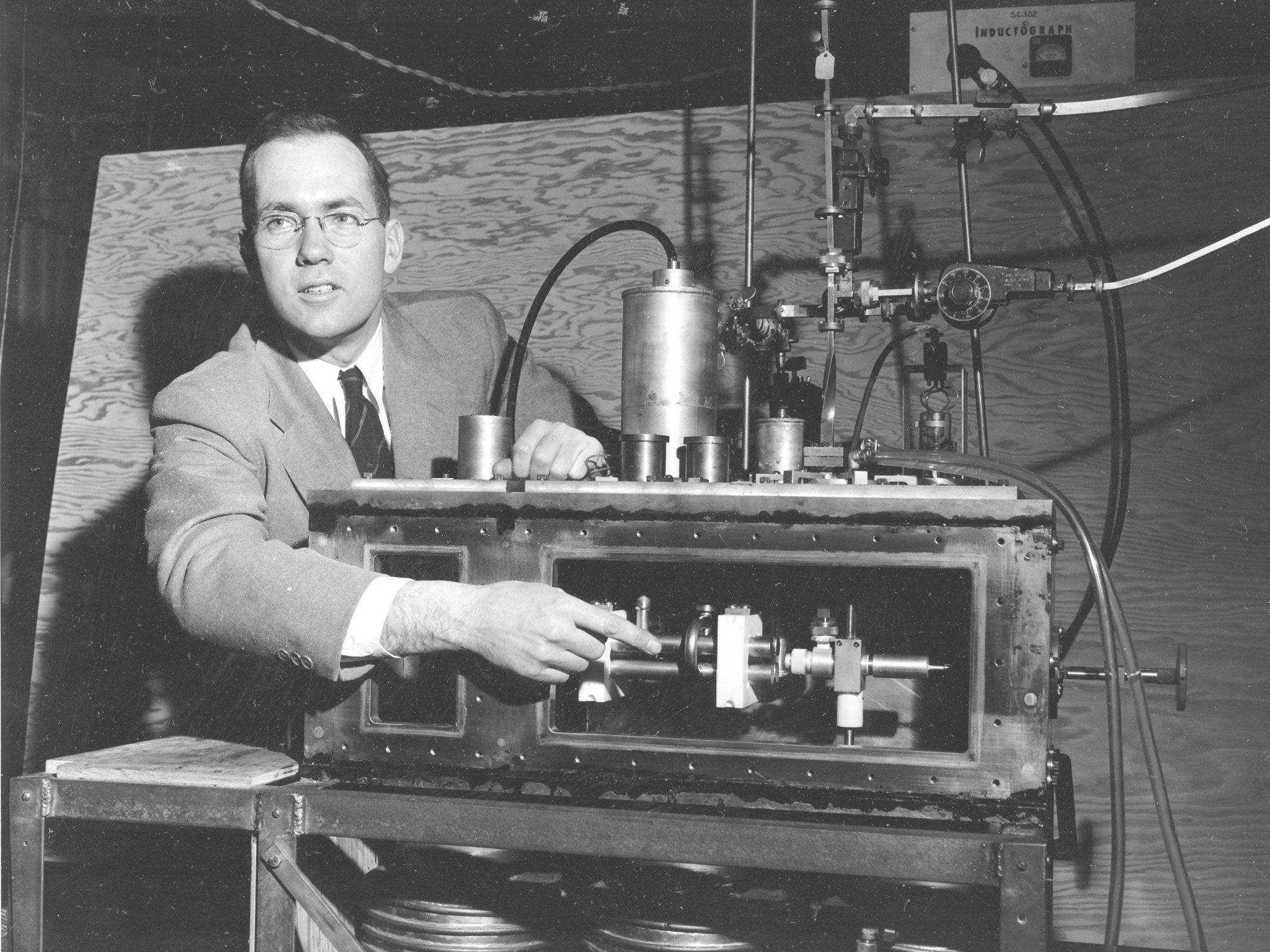Professor Charles Townes: Physicist who became involved in research by accident and went on to share the Nobel Prize for his work on lasers
Townes spent much of his working life at institutions including MIT, Columbia and Berkeley looking for new puzzles to solve

Charles Townes helped lay the theoretical foundation for the laser, which has applications in fields as diverse as medicine, commerce, communications and cosmology, an achievement which won him the Nobel Prize. Townes' main interest all his life, he liked to say, was working things out. He said he made a habit of moving from one job to another, or from one subject of interest to another, every 10 or 15 years because he was always searching for new puzzles to solve.
His research career was set in motion by accident. Unable to find a teaching position during the Depression, he joined Bell Telephone Laboratories in New York and New Jersey, working on the development of radar and navigation devices during the Second World War.
He said it was the combination of his physics background and his electrical-engineering training at Bell that led to his historic work on the laser and its forerunner, the maser. Masers achieve microwave amplification by a process called stimulated emission of radiation, while lasers produce lightwaves that have been amplified in this way. The laser was the brainchild of at least three men but Townes, who shared the 1964 Nobel Prize in physics with the Soviet scientists Nicolay Basov and Alexander Prokhorov, was chiefly responsible for the maser.
The concept that led to it came to Townes in 1951, three years after he had joined the faculty of Columbia University, where he was a professor by 35 and director of the Columbia Radiation Laboratory. On the morning of 26 April 1951 he was in Washington for a conference. Up before the hotel restaurant opened for breakfast, he walked across the street and sat on a bench in Franklin Square. The azaleas were in bloom, the sun was sparkling, and Townes, who grew up exploring the fields and woods around his family's farm, was deep in thought.
He was thinking about how to create a beam of short-wavelength, high-frequency light. In 1917, Albert Einstein had predicted that it could be done – but how and with what? Townes realised that a device was needed that would amplify light by imposing order on the unruly way it is produced in nature. The process he imagined he later called "stimulated emission."
Light is normally produced when "excited" electrons return to their normal energy level. Usually this is a disorderly or "incoherent" process, in which an electron might send off radiation in any direction at any time. Lasers boost a large number of electrons into an excited state then cause them to emit their extra energy in a kind of controlled chain reaction in which the number of photons within the laser tube quickly and repeatedly doubles.
A laser tube allows for the coordinated timing and directing of a beam of photons. In this way, a relatively weak beam of light becomes increasingly strong and coherent.
In 1954, Townes and his students built a device that used energised ammonia molecules, which they called the maser. Three years later, Townes and his brother-in-law, the Bell Labs scientist Arthur Schawlow, proposed applying a similar process to lightwaves instead of microwaves. Thus the concept of the optical maser – the laser – was born.
In 1957, a Columbia graduate student, Gordon Gould, coined the term laser for "light amplification by stimulation emission of radiation" and was encouraged by Townes to write down his ideas. Townes later claimed that he had the idea for a laser device several months before his talks with Gould.
Townes and Schawlow beat him to the patent office in 1959 but Gould filed a counterclaim. A decades-long legal battle ensued before Gould was awarded a separate patent in 1977. The controversy was further complicated when Theodore Maiman of Hughes Laboratories in Malibu produced the first working device in 1960.
Townes was born in South Carolina in 1915; his father was a lawyer, but the family also owned a small farm. At 16 he entered Furman University, near the farm. After graduating in 1935 in modern languages and physics he was eventually awarded a PhD at the California Institute of Technology, or Cal Tech.
He spent much of his working life at institutions including MIT, Columbia and Berkeley. Looking for new puzzles to solve, he turned to astrophysics in the latter part of his career, and in 1985, after a decade spent studying infrared and radio emissions, he led a team of researchers that discovered a massive black hole at the centre of the Milky Way.
A Christian who saw no dichotomy between science and religion, he enjoyed mountain climbing, scuba diving and growing African violets. He received the $1.5m Templeton Prize in 2005 "for progress in spiritual knowledge" and donated most of the money to academic and religious institutions. Unlike many scientists, he didn't shy away from talking about religion. He once said he believed that it was "extremely unlikely" that the laws of physics, which led to life on Earth, were "accidental." He believed "science and religion will converge in the long run because both are trying to understand our universe."
AMY ELLIS NUTT
Charles Hard Townes, physicist: born Greenville, South Carolina 28 July 1915; Nobel Prize for Physics (jointly) 1964; married 1941 Frances Brown (four daughters) died Oakland, California 27 January 2015.
© The Washington Post
Join our commenting forum
Join thought-provoking conversations, follow other Independent readers and see their replies
Comments